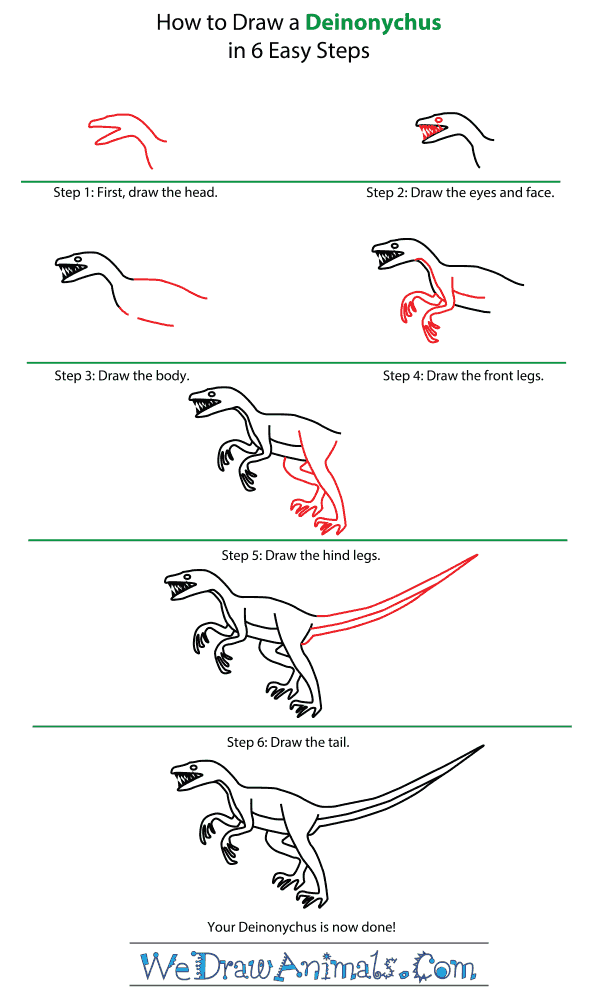In this quick tutorial you'll learn how to draw a Deinonychus in 6 easy steps - great for kids and novice artists.
The images above represent how your finished drawing is going to look and the steps involved.
Below are the individual steps - you can click on each one for a High Resolution printable PDF version.
At the bottom you can read some interesting facts about the Deinonychus.
Make sure you also check out any of the hundreds of drawing tutorials grouped by category.
How to Draw a Deinonychus - Step-by-Step Tutorial
Step 1: First, draw the head with a bird-like head and a V-shaped opening to show the mouth, and the top of the neck
Step 2: Draw the eyes and face, with a large circle for the eye and sharp teeth.
Step 3: Draw the body, using lines from the bottom of the neck to show the slope down to the underside of the Deinonychus, while the top of the neck, shoulders and back are flatter. Leave gaps for the front and hind legs.
Step 4: Draw the front legs, which were long and adapted for grasping. Deinonychus had very large, sharp claws at the end of muscular, narrow arms. Draw them at an L-shaped angle, getting ready to catch its prey.
Step 5: Draw the hind legs, which are very long and narrow. The feet are large and flat with four sharp toes, and one claw on each foot curved upwards. This curved claw was common in the group of dinosaurs that included Deinonychus and Utahraptor. Draw one leg bent and raised as if it were running.
Step 6: Draw the tail, which was longer than the body and would have stuck out straight and pointed up behind it while in motion for balance.
Interesting Facts about the DEINONYCHUS
The Deinonychus is a member of the dinosaur group and the scientific term for them is D. antirrhopus. Their Greek name “deinonychus” means “terrible claw” in English which refers to the practical elongation of some toes. The term “antirrhopus” means “counterbalancing” and refers to the likely purpose of their stiffened tail. The center digit in each of the two feet was used to slice other animals open.
Did you know?
- The animal was first documented in 1969.
- They were up to more than 11 feet long.
- The claws were .5 feet long.
- This creature had 70 teeth.
- Their head was almost 1.5 feet long.
- This species weighed over 200 pounds.
- The bite was capable of delivering almost 2,000 pounds of force.
- The animal could walk at 6 miles per hour.
hey lived in central and eastern North America at floodplains, swamps, tropical or sub-tropical forests, deltas, and lagoons. Their skull had a powerful mouth that possessed many curved teeth shaped like blades, and they hunted in numbers. These fast animals could bite through bones.







